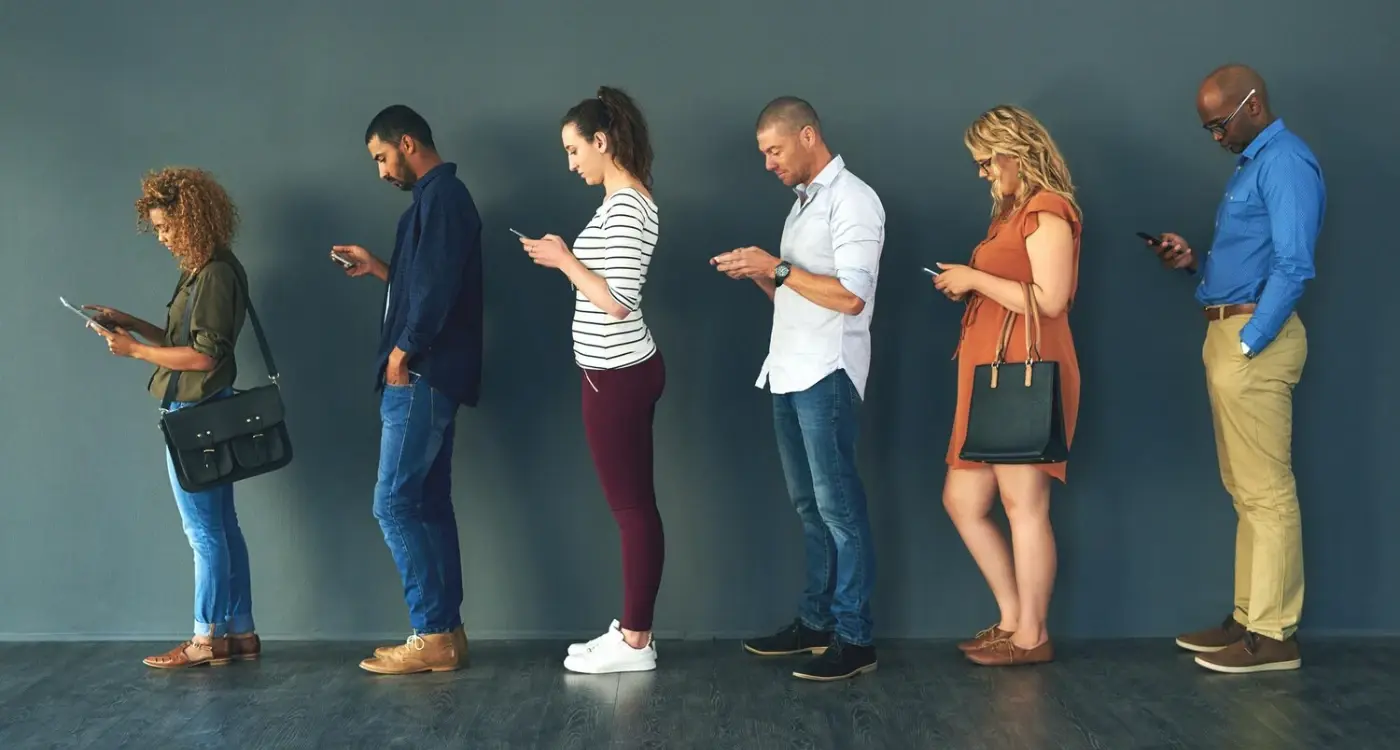What Offline Features Do Users Actually Want In Mobile Apps?
We live in a world where mobile apps have become part of our daily routine, yet there's one big problem that keeps cropping up—what happens when the internet disappears? I've been working with mobile app development for over eight years now, and I can tell you that understanding user preferences around offline functionality has become absolutely critical for any successful mobile app. Users don't just want apps that work; they want apps that work everywhere, all the time.
The thing is, people's internet connections are far more unreliable than we'd like to admit. Whether you're on the tube, in a lift, or travelling through areas with patchy signal, your phone becomes a very expensive paperweight unless your apps can handle being offline. What's fascinating is how different people use their phones during these disconnected moments—and what they expect their apps to do.
The best mobile apps are the ones that make you forget whether you're online or offline
Throughout this guide, we'll explore what users actually want when they can't connect to the internet. We'll look at real behaviour patterns, examine which types of apps benefit most from offline features, and uncover the surprising ways that offline functionality can make or break user engagement. Trust me, some of the findings might change how you think about mobile app development entirely.
What People Really Do When They're Not Connected
I've watched people use their phones in the most remote places you can think of—trains going through tunnels, lifts in old buildings, even camping trips where the nearest phone mast is miles away. What strikes me most is how automatically we reach for our phones, even when we know there's no signal. It's become such a habit that we don't even think about it anymore.
When people lose their internet connection, they don't just put their phones away and forget about them. They actually do quite a lot with their devices, and understanding this behaviour is what makes the difference between so-so apps and stellar apps the moment the WiFi drops out.
The Most Common Offline Activities
From my experience working with app users over the years, here's what people actually do when they're not connected:
- Take photos and videos (even if they can't share them straight away)
- Check the time, set alarms, and use the calculator
- Read content they've already downloaded or cached
- Play games that don't need internet
- Write notes, emails, or messages to send later
- Listen to music or podcasts they've downloaded
- Use maps and navigation with offline data
- Review their calendar and plan their day
The key insight here is that people don't stop being productive when they lose connection—they just change what they're doing. Smart app developers recognise this and build their apps to work with these natural behaviours rather than against them.
The Apps That Work Best Without Internet
After years of building mobile apps for all sorts of clients, I've noticed something interesting about user preferences—people absolutely love apps that work regardless of their connection. Makes sense really, doesn't it? Nobody wants to be stuck with a useless app when they're underground on the tube or in a dodgy signal area.
Some app categories naturally shine when they're designed to work offline. Games are probably the most obvious winners here; puzzle games, word games, and strategy games can keep people entertained for hours without needing a single byte of data. Notes and writing apps are another brilliant example—users expect to jot down thoughts whenever inspiration strikes, not just when WiFi is available.
Apps That Excel in Offline Mode
- Puzzle and strategy games
- Note-taking and writing apps
- Photo editing and camera apps
- Calculators and utility tools
- Reading apps with downloaded content
- Music players with stored tracks
- Weather apps with cached forecasts
Photo editing apps are particularly clever at this—they work with images already stored on your device, so there's no need for an internet connection. The same goes for music players and e-readers that let you download content beforehand.
Design your app's core features to work offline first, then add online enhancements. This approach makes your mobile app much more reliable and user-friendly.
Why Battery Life Matters More Than You Think
When someone's phone battery starts dying, the first thing they do is close apps. Not just any apps—they close the ones that are draining power the fastest. If your app is one of those battery-hungry beasts, you're getting the boot straight away.
I've watched this happen countless times during user testing sessions. People will be happily using an app, then suddenly their battery drops to 15% and panic sets in. They start frantically closing everything that might be sucking up power, and offline features become absolute lifesavers in these moments.
What Kills Battery Life in Apps
The biggest battery drains are usually the things that keep your phone working overtime:
- Constant internet connection attempts
- GPS tracking that won't stop
- Background sync processes
- Video streaming and downloads
- Push notifications every few seconds
Smart offline features can actually help your app use less battery. When your app isn't constantly trying to connect to servers or refresh data, it gives the phone's processor a break. Users notice this stuff—they really do. An app that works well offline and doesn't murder their battery becomes the app they trust when they're out and about.
The apps that survive the great battery purge are the ones that have thought about power consumption from day one.
Maps and Navigation Without Data Connection
I've watched countless people panic when their phone loses signal just as they need directions most. It's one of those moments that really shows how much we depend on our devices—and why offline maps are such a brilliant feature when done right.
The thing about navigation apps is that they need to work when you're in the middle of nowhere, driving through tunnels, or exploring places where mobile coverage is patchy. Users don't just want this feature; they absolutely need it. That's why top app developers like Google Maps and Apple Maps let you download entire areas before you travel.
What Makes Offline Maps Actually Useful
Downloaded maps need to include more than just the basic roads. People want to see landmarks, petrol stations, restaurants, and points of interest. They also want the app to remember their search history and saved locations—there's nothing worse than losing your carefully planned route because you went offline.
The best offline navigation apps feel exactly the same as their online versions, just without the live traffic updates
Smart caching makes all the difference here. Instead of making users manually download everything, the app can quietly save areas you visit regularly. Your daily commute, your neighbourhood, places you've searched for recently—all stored locally without you having to think about it.
Entertainment Features That Don't Need WiFi
When you're stuck on a train for hours or waiting in a doctor's surgery, the last thing you want is to watch your mobile data disappear faster than a magician's rabbit. This is where offline entertainment features become absolute lifesavers—and I mean that quite literally when you're travelling with bored children!
The best entertainment apps understand that connectivity isn't always guaranteed. Netflix figured this out years ago with their download feature, but there's so much more to offline entertainment than just streaming video. Music apps like Spotify allow you to download entire playlists, whilst reading apps can store thousands of books locally on your device.
Games That Work Anywhere
Games are probably the most obvious offline entertainment feature, but not all games are created equal. The ones that work best offline include:
- Puzzle games that save your progress locally
- Story-based adventures that don't need online leaderboards
- Strategy games with single-player modes
- Educational games for children
- Word games and crosswords
Creative Tools That Keep Working
Photo editing apps, drawing tools, and music creation software can all function perfectly without an internet connection. These features let people create content during downtime, which they can then share once they're back online. Smart app developers know that creativity doesn't wait for WiFi—it strikes when inspiration hits, regardless of where you are.
Shopping and Payment Apps in Offline Mode
Shopping apps face a unique challenge when users lose their internet connection—people still want to browse, add items to baskets, and yes, even complete purchases. I've worked on retail apps where this was make-or-break for the business; customers don't wait around for WiFi to come back, they just use a competitor's app instead.
The smart approach is letting people browse previously loaded products, read cached reviews, and build their shopping lists offline. When they reconnect, everything syncs up perfectly. Payment apps need to be more careful though—security comes first, but users still expect basic account information and transaction history to be available without an internet connection.
What Actually Works
Store product catalogues locally so people can browse and compare items. Save shopping baskets and wishlists offline—nothing's more frustrating than losing your carefully curated cart because the WiFi dropped out. For payments, showing recent transactions and account balances works well, but actual money transfers need that secure connection.
Cache your most popular products and user's browsing history locally. This covers about 80% of what people actually look at in shopping apps, and it barely uses any storage space.
User preferences show that people want shopping apps to feel responsive even when they're not connected. They'll forgive delayed purchases, but they won't forgive apps that become completely unusable the moment they lose signal.
Business Apps That Keep Working Anywhere
I've worked with countless businesses over the years, and one thing that always comes up is the need for apps that work when the internet doesn't. You know what I mean—those moments when you're in a meeting room with terrible WiFi, or travelling on a train through the countryside where signal drops in and out every few minutes.
Business apps need to be reliable above all else. When someone's trying to access client information, check their schedule, or update project details, they can't afford to wait for a connection. The best business apps I've seen store the most important data locally on the device, so users can view contacts, read documents, and check calendars without any internet at all.
What Business Users Need Most
From my experience, business professionals rely on these offline features more than anything else:
- Contact lists with phone numbers and email addresses
- Calendar events and meeting details
- Document viewing (PDFs, presentations, spreadsheets)
- Note-taking and voice memos
- Time tracking and expense logging
- Basic CRM data like client history
The trick is making sure these apps sync properly when connection returns. Nobody wants to lose important updates or create duplicate entries because the app couldn't handle offline changes properly.
Conclusion
After spending years building mobile apps and watching user preferences evolve, I can tell you that offline features aren't just nice-to-have extras anymore—they're what separate good apps from great ones. The data doesn't lie; people use their phones everywhere, and everywhere doesn't always have reliable internet.
The most successful apps I've worked on share one common trait: they understand that user preferences have shifted towards expecting things to work regardless of connectivity. Maps that cache routes, entertainment apps that download content, shopping apps that save wishlists—these aren't fancy features, they're basic expectations now.
What's really interesting is how battery life connects to all of this. When your mobile app isn't constantly trying to connect to servers that aren't there, it runs smoother and drains less power. Users notice this stuff, even if they don't always understand why their phone feels snappier.
The key takeaway? Stop thinking about offline features as backup plans. Start thinking about them as your main strategy for keeping users engaged. Because at the end of the day, the best mobile app is the one that works when users need it most—regardless of whether they've got full bars or no signal at all.
Share this
Subscribe To Our Learning Centre
You May Also Like
These Related Guides

Which Features Should I Add First When Users Ask for More?

Why Would Customers Choose My App Over My Website?



